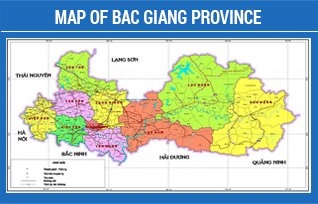Nung ethnicity
Among ethnic minorities in Bac Giang, the Nung ethnic group has the largest population with over 76,000 people (data for 2014). Nung ethnic groups live mainly in mountainous districts, such as Son Dong, Luc Ngan, Luc Nam, Lang Giang. Nung ethnic people to Bac Giang just a few hundred years ago. Nung language belongs to Tay-Thai language.
Nung's name is derived from the Nung family name - one of the four powerful families under Duong Dynasty in Guangxi (China). From the period of Van Van – Au Lang, the ancient Nung ethnic group soon joined in with other ethnic groups. Up to now, the Nung ethnic group in our country has been mainly distributed in the provinces of northeastern Vietnam such as Cao Bang, Lang Son, Thai Nguyen, Tuyen Quang, Yen Bai, Lao Cai, Bac Giang. During the process in Vietnam, there are many Nung people who are assimilated by the Tay people
Nung has long been used as a source of subsistence for paddy rice and other food crops and vegetables such as potato, cassava, sesame, peanuts, beans. Which is equally important. The form of family farming is very developed. Natural economies such as the gathering are still popular. Women go the forest, the field often take the small small basket to collect wild vegetables, mushrooms, ear ear ... contribute to enrich the daily meal.
The Nung traditional costume is quite simple, usually made of rough, self-woven fabric, dyed indigo and almost without embroidery. Men put on a shirt, neck, chest, with buttons. Women wear five buttons, buttons on the right arm, often only long over the hip.
The housing of the Nung ethnic group in Bac Giang consists of two types: traditional stilt house and land house, in addition there are intermediate types are semi-half houses. For a long time, the Nung people in Bac Giang have built houses, also known as the ground floor house, and still retain the traditional features in living space distribution as well as construction techniques.
Nung people often live in hamlets, sometimes with Tay people, Kinh people. Relatives and cousins oftel live near each other.

